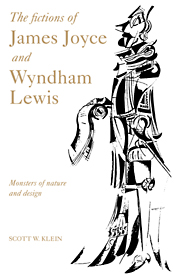3 - The cracked lookingglass of the master
Published online by Cambridge University Press: 22 October 2009
Summary
‘– What exactly is your discourse intended to prove?’ ‘Not the desirability of the marriage tie, if that's what you mean, any more than a propaganda for representation and anecdote in art…’
Wyndham Lewis, Tarr, 19[D]oes not all power that is real exact that it shall be visible…
Wyndham Lewis, The Apes of God, 587The Vortex and the squaring of the circle in Blast and Ulysses act as the organizing symbols for syntheses postulated and frustrated: emblems of opposition that bear within themselves intimations of unities that are neither achieved nor completely dismissed by the texts that produce them. In Blast the manifestoes’ claims of contained opposition are balanced by the way Enemy of the Stars cancels the rhetoric that surrounds it. Lewis's aesthetic emerges not as the capturing or ratification of the real, but as the formal erection of simulacra that proclaim their power to represent while simultaneously exposing the machinery that turns them, like Bestre's tales, into agents of heroic distortion. In Ulysses, similarly, strength in representation is inseparable from weakness. In Stephen's narrative of Shakespeare the forces of desire that lay within narrative language are revealed as divisive to the marriage of sign and object, suggesting that for Ulysses adultery and the object itself are bound together as representation's irreconcilable goals and conditions.
At this level of investigation the two authors’ aesthetics show remarkable similarities of intent. Lewis's deliberate self-contradiction and ultimate fascination by Bestre's false heroics differs markedly from Joyce's almost rueful treatment of linguistic division, not least in the larger possibilities of containment or dispersal each author offers his potential interpreters.
- Type
- Chapter
- Information
- The Fictions of James Joyce and Wyndham LewisMonsters of Nature and Design, pp. 113 - 152Publisher: Cambridge University PressPrint publication year: 1994



